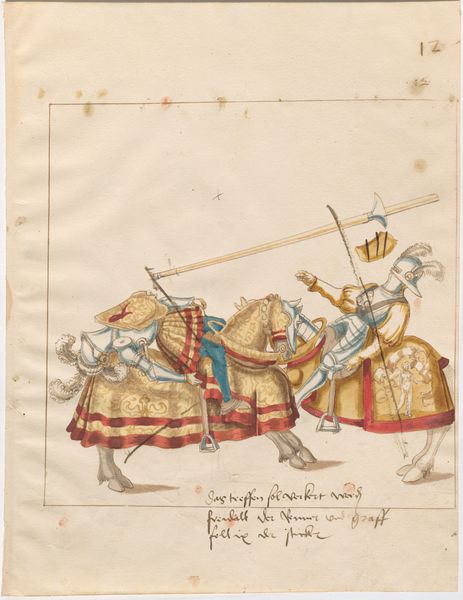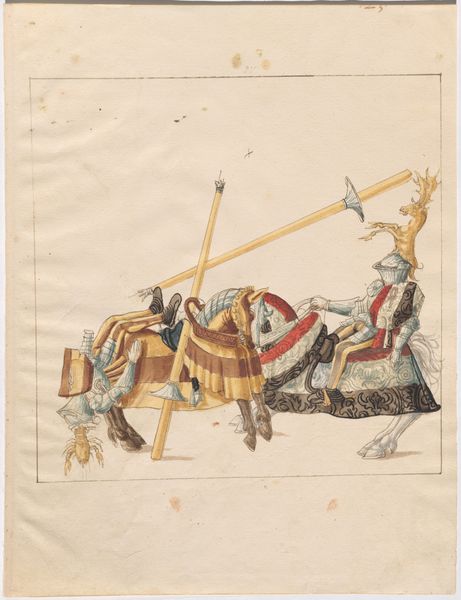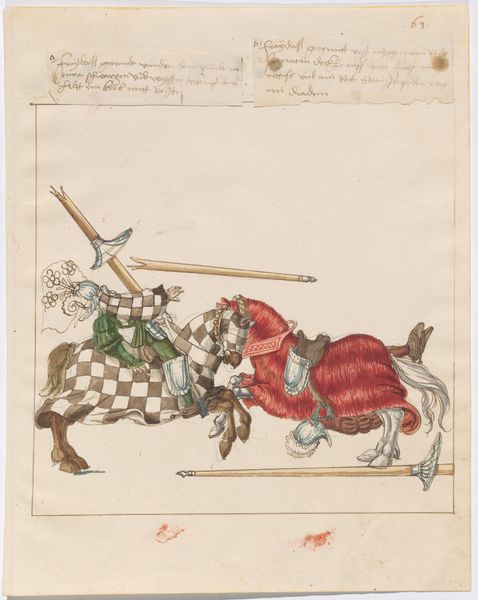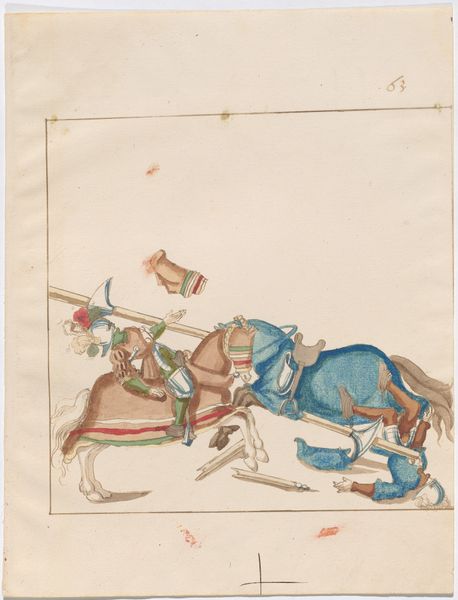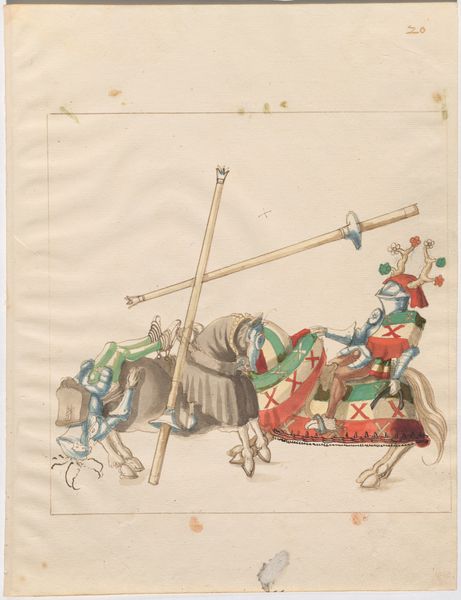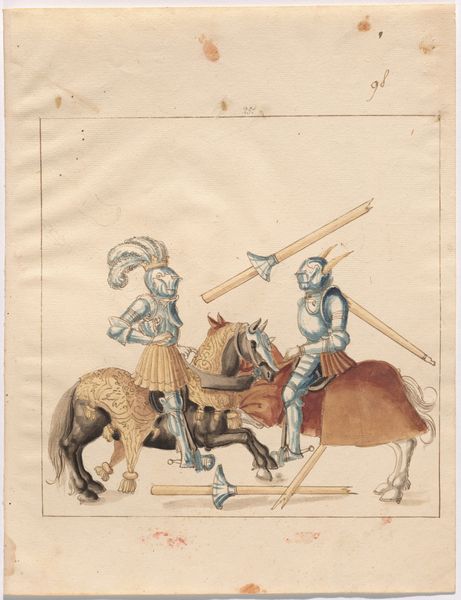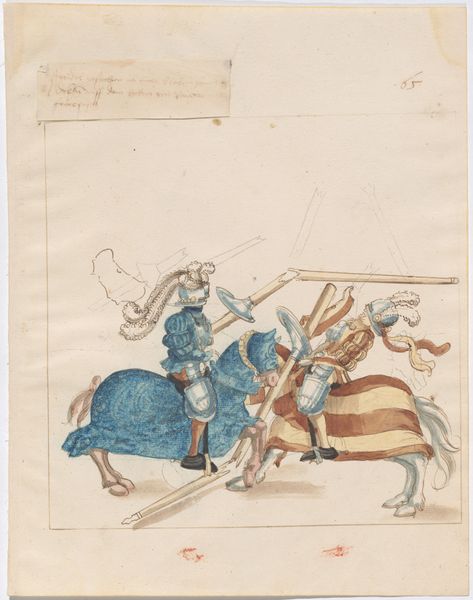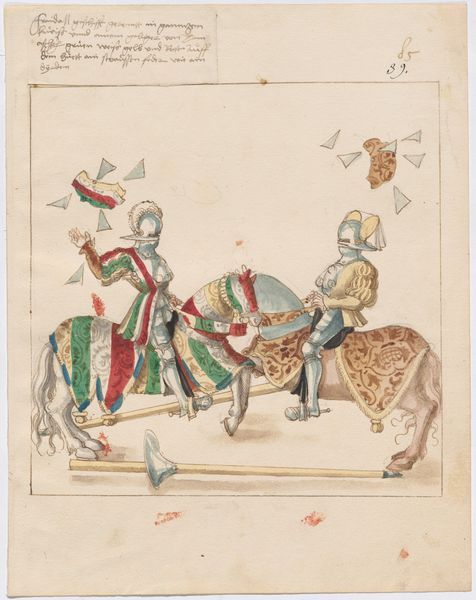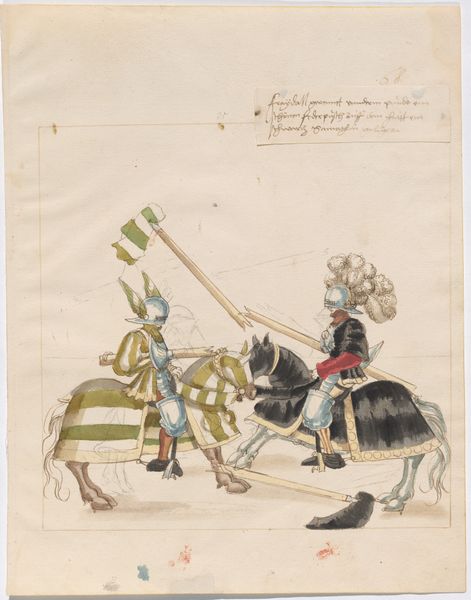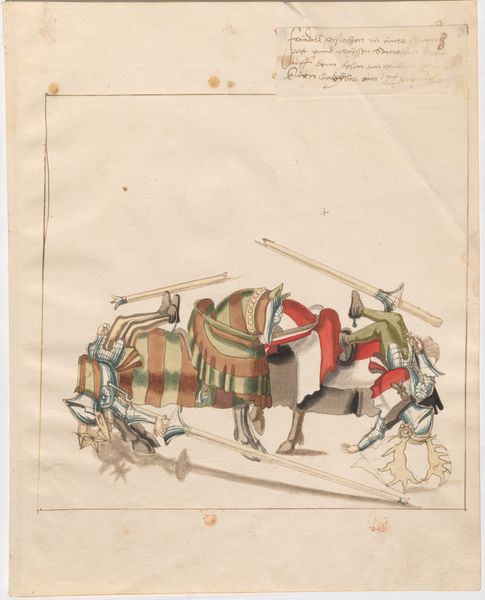
drawing, watercolor
#
drawing
#
water colours
#
figuration
#
11_renaissance
#
watercolor
#
genre-painting
#
history-painting
#
northern-renaissance
#
watercolor
Dimensions: sheet: 33.7 × 26.3 cm (13 1/4 × 10 3/8 in.)
Copyright: National Gallery of Art: CC0 1.0
Curator: What a delightfully rendered, though somewhat chaotic, scene. Editor: Delightful? My first impression is actually that of a quite violent crash. Lances splintering, knights unseated...It's quite graphic. Curator: Graphic, certainly, but look closer. We’re viewing an anonymous watercolor and ink drawing from the early 16th century, titled "German Joust of Peace," created circa 1512-1515. What initially seems like disarray, might be a highly ritualized performance. Editor: I concede that it is rather…controlled. The combatants mirror one another, almost like figures in a heraldic emblem. But the title, "Joust of Peace," is a stark contrast. Were such events really considered peaceful? Curator: In a sense, yes. Jousts like this one were displays of power and chivalry, a substitute for actual warfare. The breaking of the lances could be viewed as a symbolic release of aggression. Consider, too, the specific colors. Blue and white are dominant. What might those evoke? Editor: Royal authority, perhaps? The colors of a particular noble house? Power was inevitably a matter of family connections and inherited privilege in early modern Europe. The visual spectacle, from the highly decorated horses to the armored knights, undoubtedly reinforced existing social hierarchies. Curator: Precisely. The imagery conveys more than just physical combat; it presents a structured drama reflecting the social order. The broken lances themselves aren't simply wreckage; they become symbols of controlled conflict and perhaps even negotiated settlements. Note how both combatants remain largely unharmed. Editor: A crucial point. The emphasis seems to be less on violence and more on maintaining decorum within a potentially volatile situation. Though peace does strike me as an odd way to describe such events… The performance of power then, takes precedence over genuine aggression, making this drawing a telling comment on Renaissance ideals. Curator: Exactly. So, the image invites us to consider the deeper layers of meaning embedded within these seemingly violent spectacles, pointing towards a system of cultural codes designed to channel aggression, maintain order, and showcase status. Editor: I'm now finding the "delight" in the painting's subversion of first impressions; a compelling case for reading beyond the surface to decode the Renaissance spectacle.
Comments
No comments
Be the first to comment and join the conversation on the ultimate creative platform.
